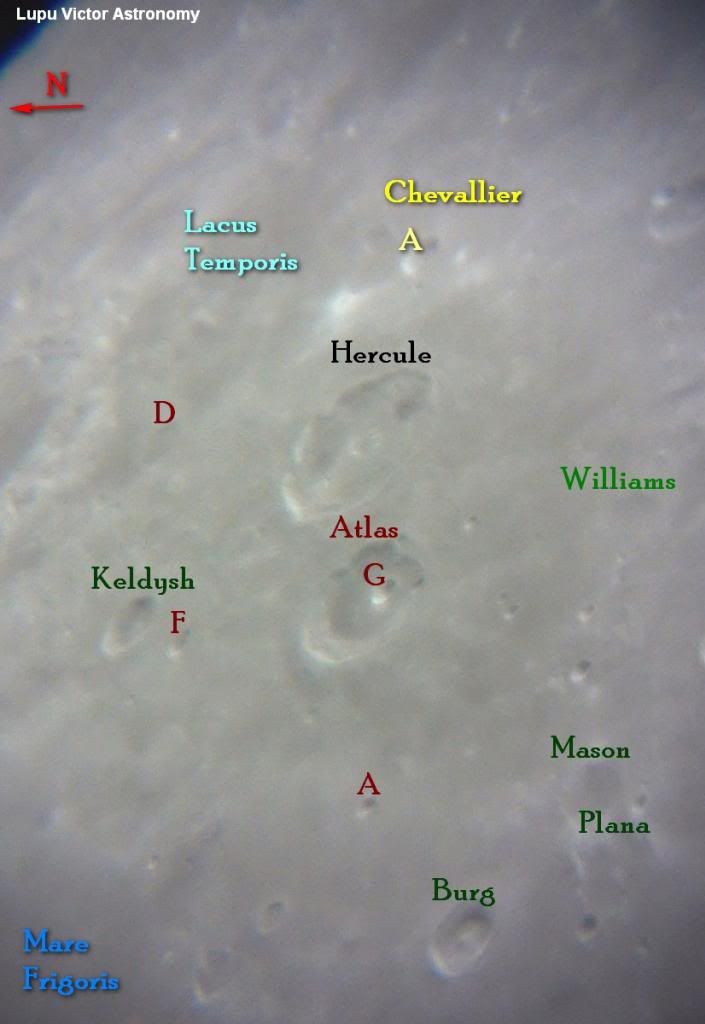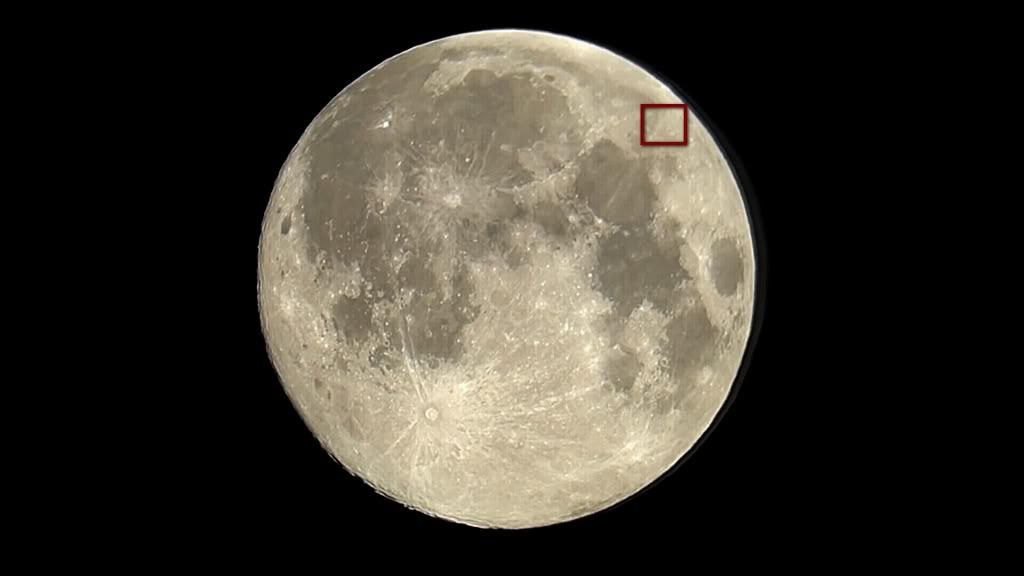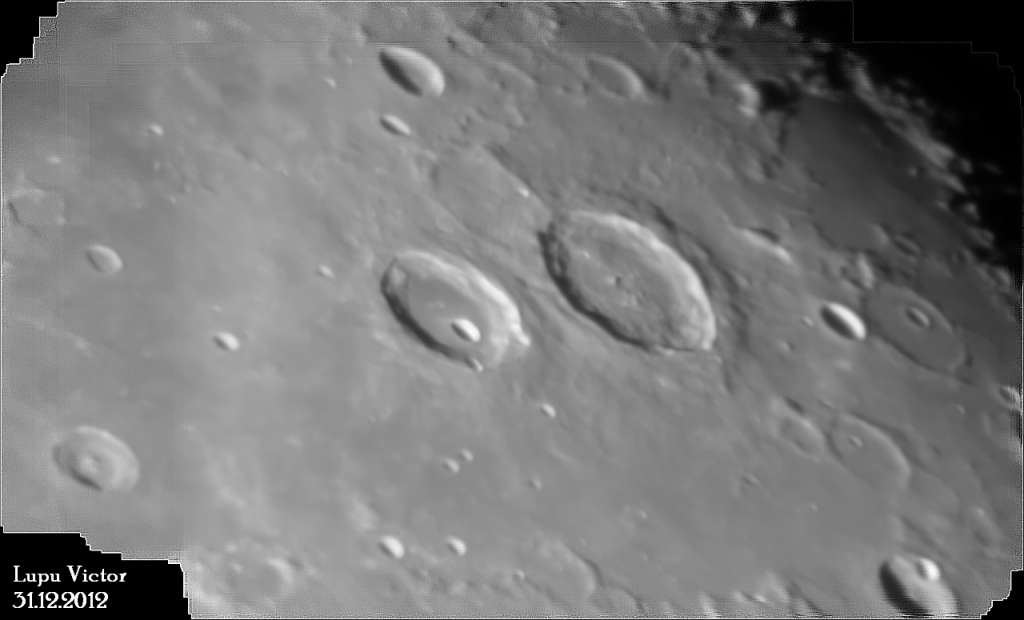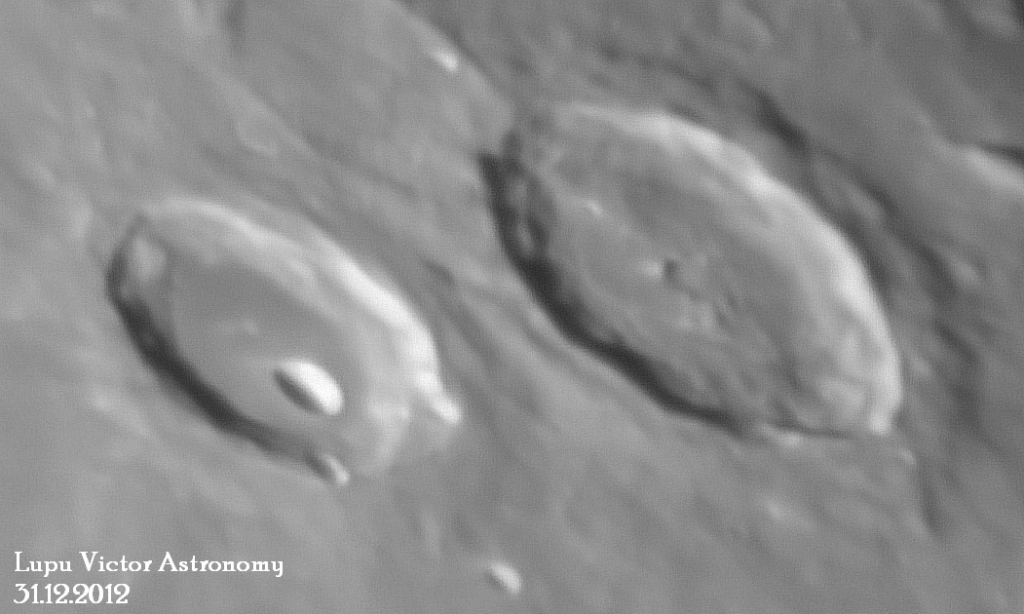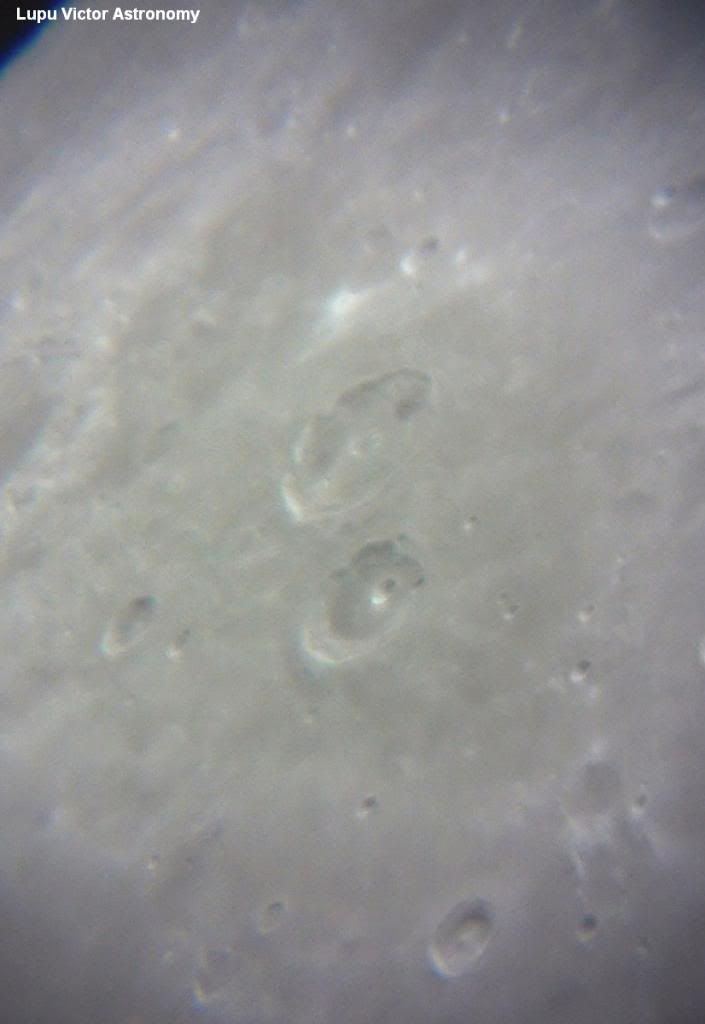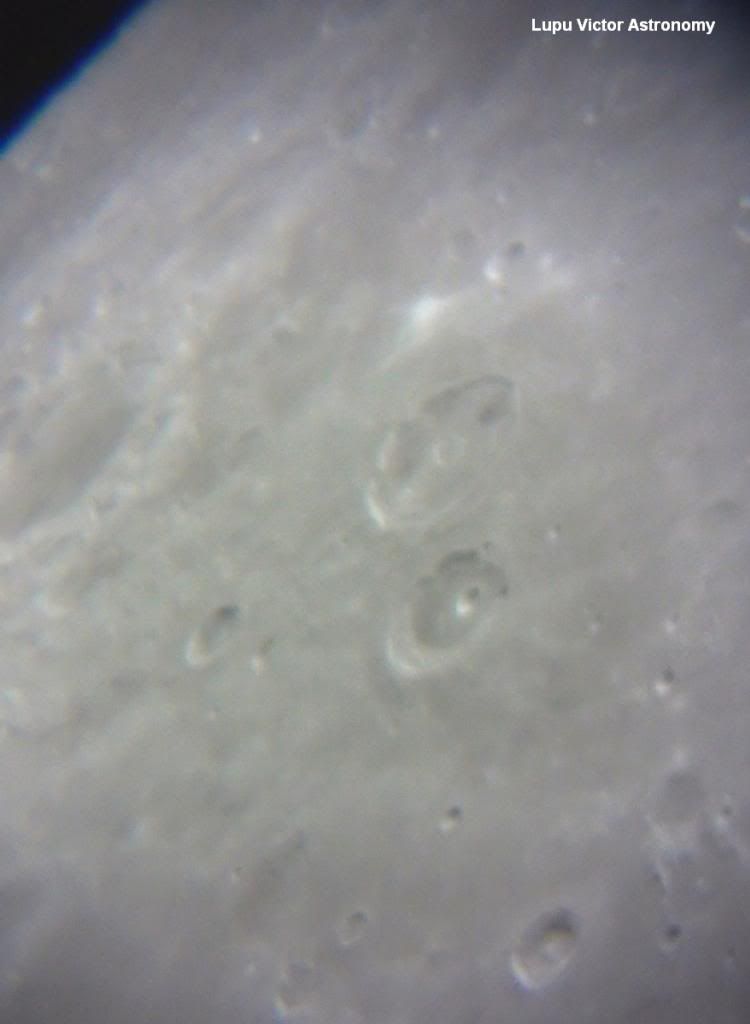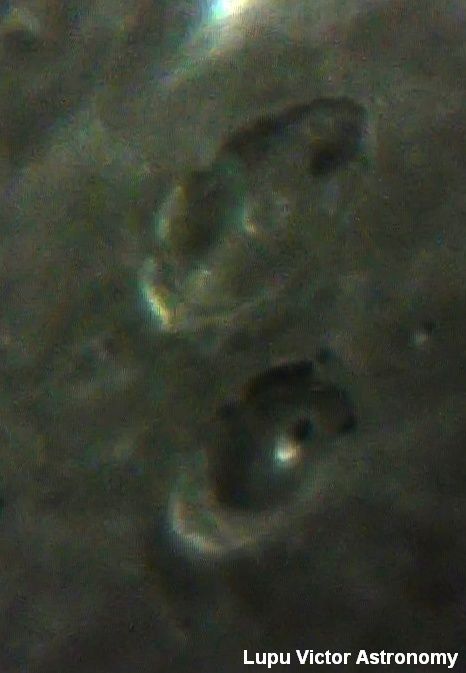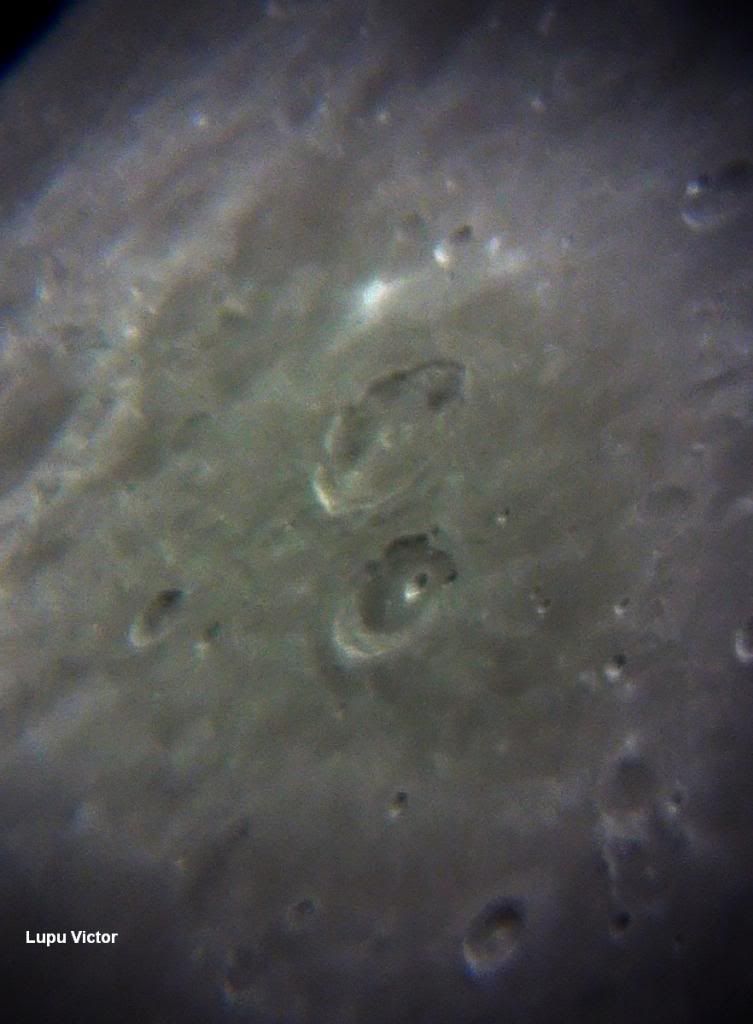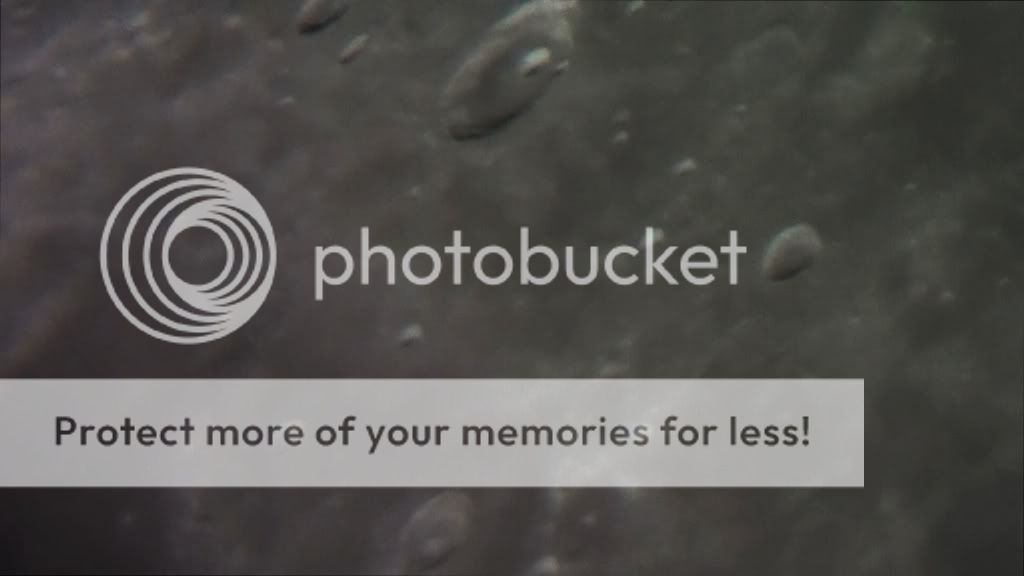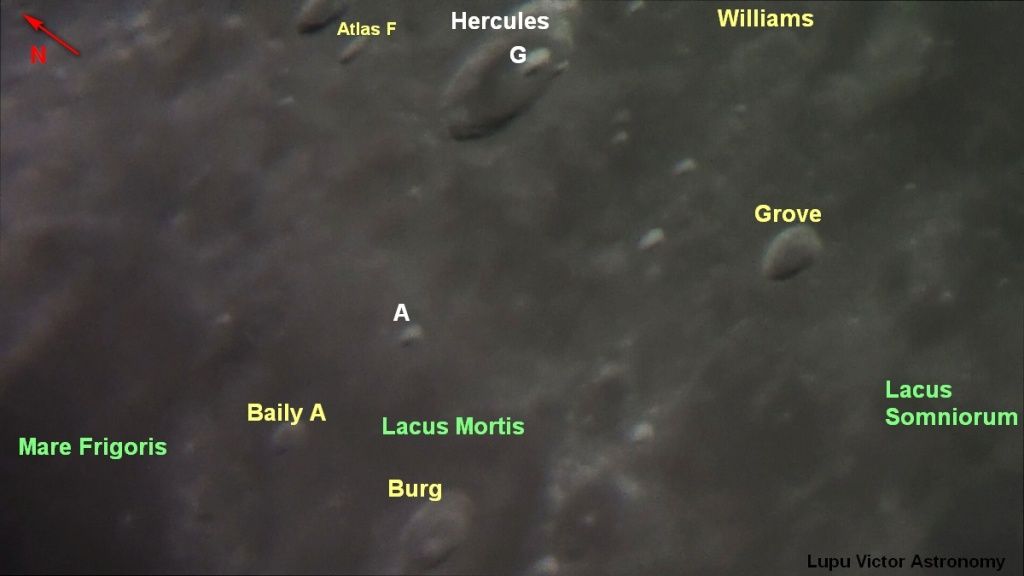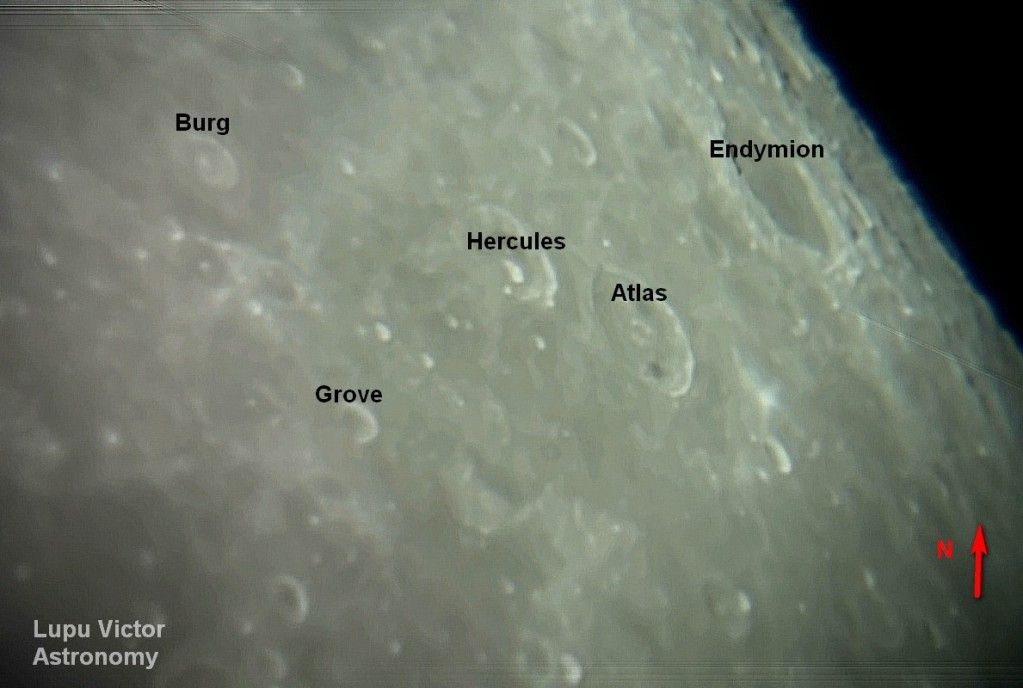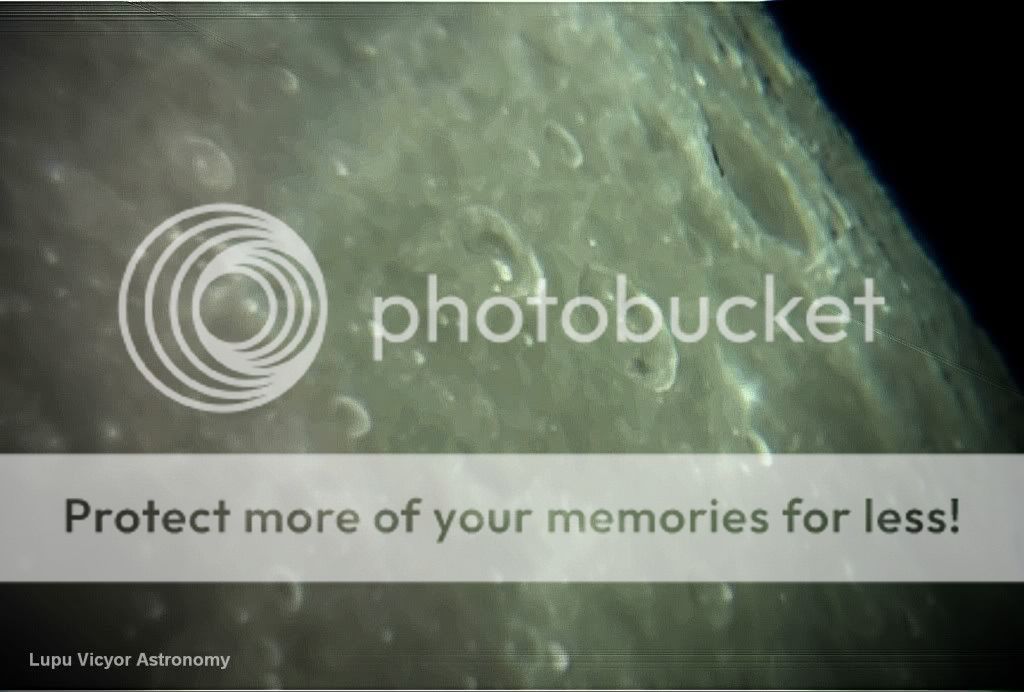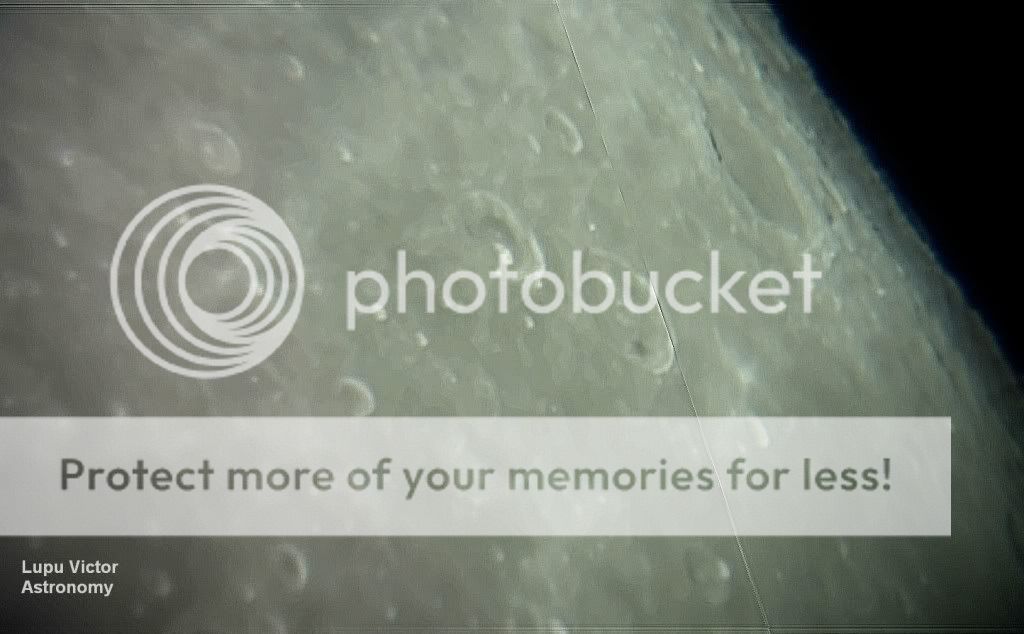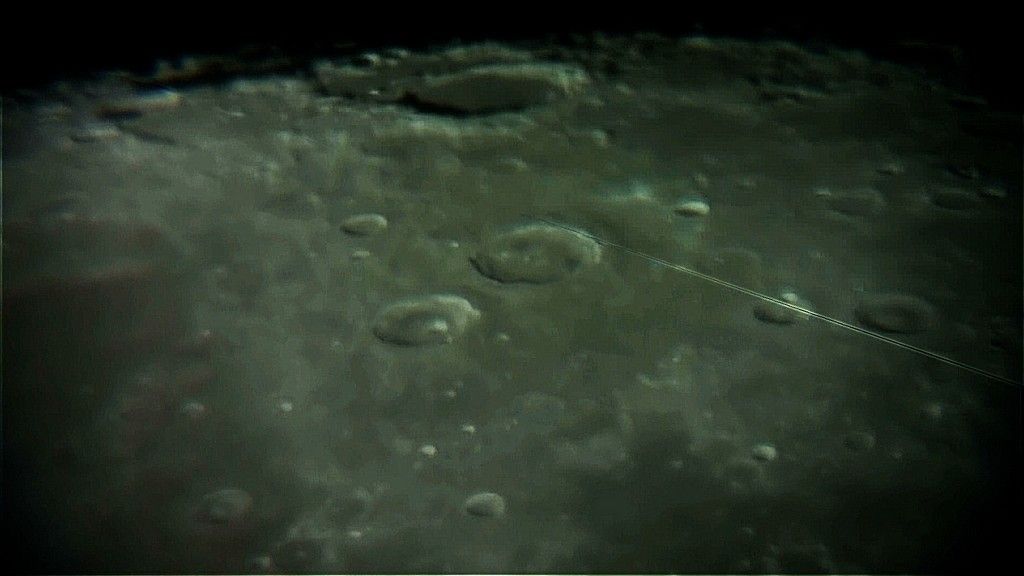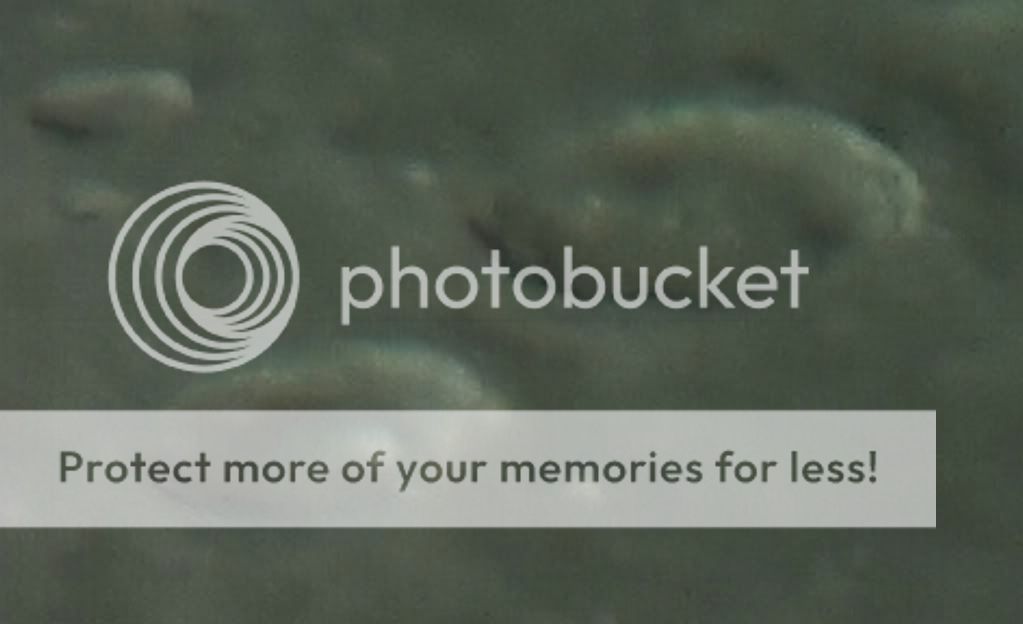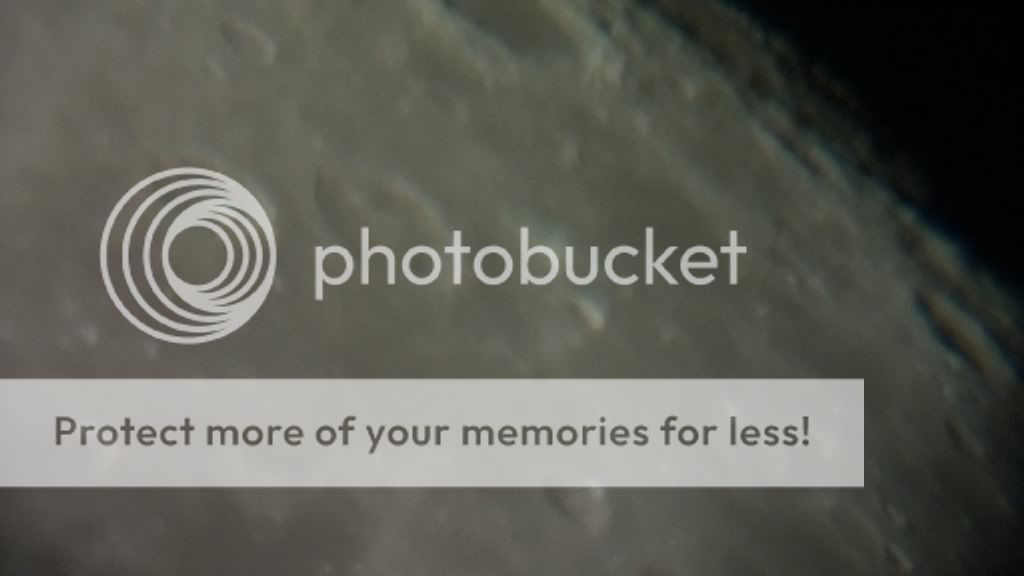Craters Hercules / Atlas (69/87 km), lies east of Mare Frigoris and form an unusual pair because they have different characteristics. But because they are close to each other, are easily memorized together by telescope observers.
Hercules is smaller, and has a small distinct crater in its center which best defines him, called Hercules G (14 km). Atlas is bigger with a wide inside edge and several low central peaks on its floor. Hercules, is bordered to the west by Lacus Mortis with crater Burg (40 km) in its center and Atlas have on the northeast the crater Endymion (125 km), which is located near the edge of the Moon as we see it from Earth .
Magnitude: -10.82
Phase: 0.46
Distance: 399.283 km
Illuminated: 45.6% (0% = New, 100% = Full)
Astronomical instrument: Celestron C8-Newtonian telescope,
Eyepiece: Plossl 20mm, 2x Barlow
Mount: CG5 (EQ5)
Camera: Sony CX130
Filter: no
Date: 30.01.2012
Location: Baia Mare, Romania
Processing: FastStone Image Viewer
In the picture below are labeled craters and other lunar features in the region. To better understand this photo, you should note that the label with the name or the letter of larger craters could be found at their center, and on the small craters, you should find them around them, usually above.
Hercules is smaller, and has a small distinct crater in its center which best defines him, called Hercules G (14 km). Atlas is bigger with a wide inside edge and several low central peaks on its floor. Hercules, is bordered to the west by Lacus Mortis with crater Burg (40 km) in its center and Atlas have on the northeast the crater Endymion (125 km), which is located near the edge of the Moon as we see it from Earth .
Magnitude: -10.82
Phase: 0.46
Distance: 399.283 km
Illuminated: 45.6% (0% = New, 100% = Full)
Astronomical instrument: Celestron C8-Newtonian telescope,
Eyepiece: Plossl 20mm, 2x Barlow
Mount: CG5 (EQ5)
Camera: Sony CX130
Filter: no
Date: 30.01.2012
Location: Baia Mare, Romania
Processing: FastStone Image Viewer
In the picture below are labeled craters and other lunar features in the region. To better understand this photo, you should note that the label with the name or the letter of larger craters could be found at their center, and on the small craters, you should find them around them, usually above.








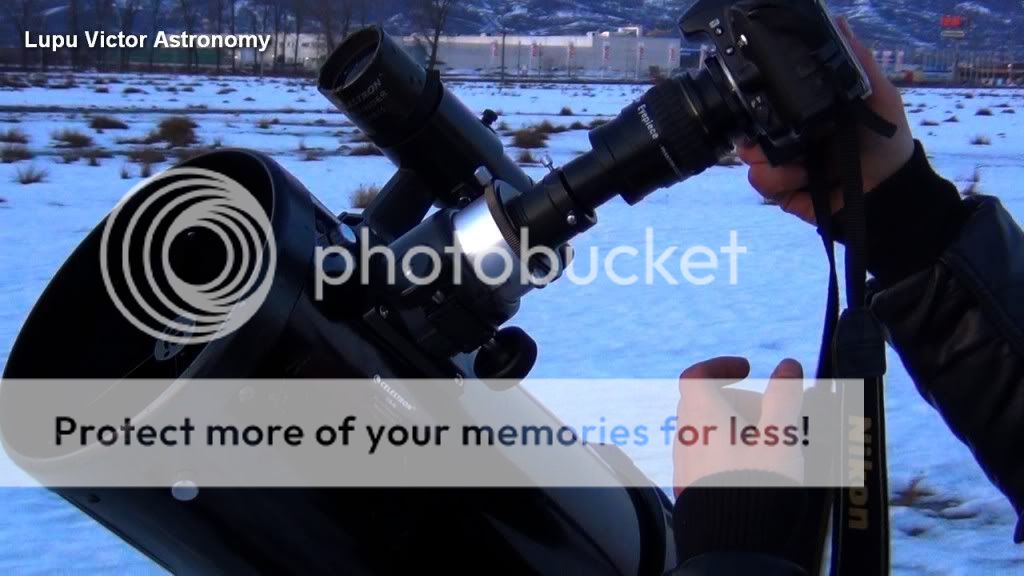

 Monday, May 23, 2016
Monday, May 23, 2016
 Unknown
Unknown









